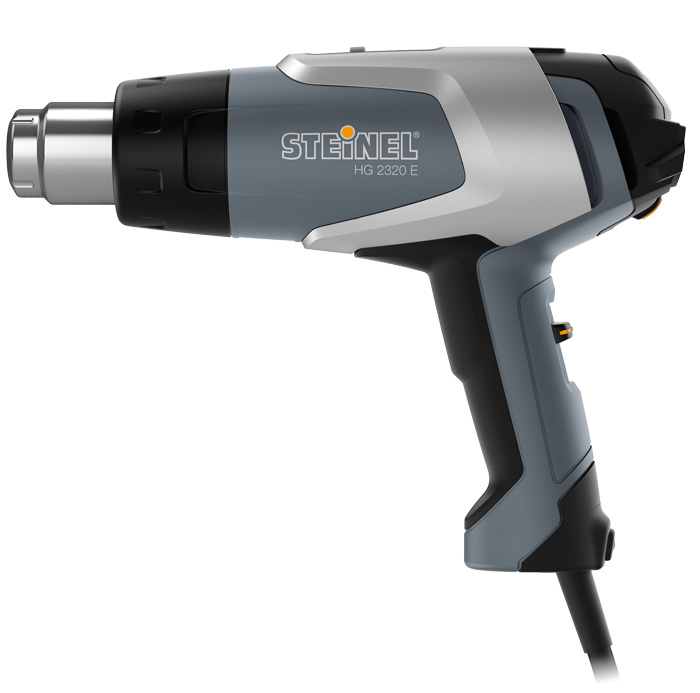ABS
Acrylonitrile Butadiene Styrene
A hot air gun is a versatile tool.
You will find a suitable nozzle for your different applications.
A hot air tool is your handy and cost-effective solution for welding plastics.
You only need the right nozzle, a welding shoe and the right welding rod made of the same material.
We offer professional hot air tools with temperature and air volume control.

Practical and very suitable for many applications.
Your cost-effective choice for welding plastics.
Welding plastics is easy with a hot air tool.
You gently heat the plastic parts until the surface melts. Melt the welding rod at the same time with the air jet.
The soft welding rod is then pressed onto the surface.
A welding shoe helps you guide the welding rod and you apply the joining pressure to the molten material.
You can use other adapters to extend the range of applications. There are attachments for film welding, deforming plastic and shrink tubing, heating and removing stickers.
Remove dirt, residues of oil or grease and, if necessary, paint.
Drill out the ends when welding a crack to relieve the stress on the material.
Now mill or cut a V-shaped joint along the joint so that you weld as large a surface as possible.
The larger the surface you weld on, the more stable the weld will be.
Chip off a thin layer of the surface so that you are welding onto a fresh, unoxidised surface.
Make sure that you melt the base sufficiently.
In diese Schmelze wird der Schweißzusatz gedrückt. This must also be melted.
The temperature must not be set too high when welding plastics.
We recommend not to heat the plastics above 300 °C. The air volume is set low so that you do not heat the surrounding material too much and thus avoid deformation of the plastic part.
The simplest way to reliably weld plastics.
A welding shoe has an opening to insert the welding rod. The warm air comes out at the bottom and melts your plastic part.
Use the surface on the welding shoe to smooth the weld and apply the necessary joining pressure to the molten material.
Push the welding rod through the rod feeder. Melt the end with the hot air jet.
Now heat the joining area until you can see that the surface is melting.
Now press the soft end of the welding rod onto the plastic part and start to pull the hot air gun slowly.
Press the welding rod through the feeder with constant pressure.
When you reach the end of the weld, weld a few more millimetres and pull the hot air gun away upwards.
Do not pull off the welding rod. Rather cut off the protruding rod or wire and press the still soft plastic into each other.
This variant is more difficult than the one described above with the welding shoe.
But you will find it easier to weld hard-to-reach places.
You can also weld tight radii better than with a welding shoe.
Use only a round nozzle when you weld without a welding shoe.
Hold the welding rod at right angles to the plastic part. Now heat the welding rod and be especially careful to heat the welding area with the hot air jet.
Move the nozzle from top to bottom and from left to right.
Press the welding rod onto the surface with even pressure.
A combination of the variants fanning welding and welding with a welding shoe.
This method allows you to perform welds in hard-to-reach places with little fatigue.
Push the welding rod through the opening in the wooden handle and place the rod against the metal roller.
Now hold the roller so that you plasticise both, the welding rod and the joining part with the hot air jet.
Now guide the welding rod with the pressure roller evenly over the joining surface with constant pressure.




Acrylonitrile Butadiene Styrene
Acrylonitrile Butadiene Styrene / Polycarbonat
Acrylonitrile-Styrene-Acrylate-Copolymerizate
Polyamide / Nylon
Polycarbonate
Polyethylene
Polypropylene
Polypropylene EPDM
soft PP
Polystyrene
Polyvinyl Chloride
thermoplastic elastomer